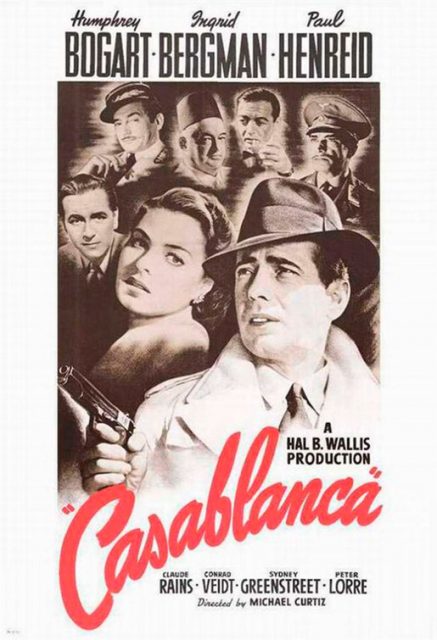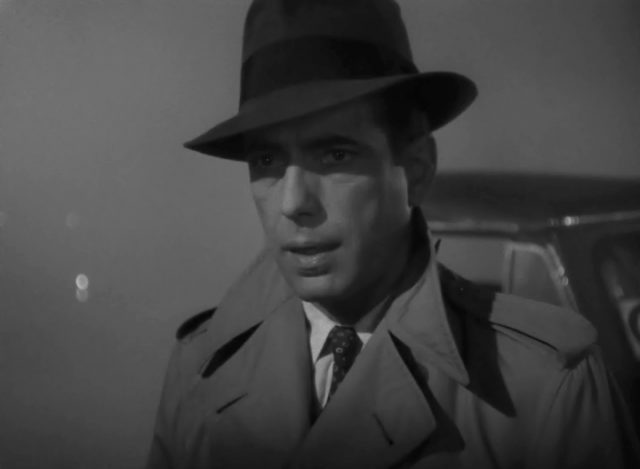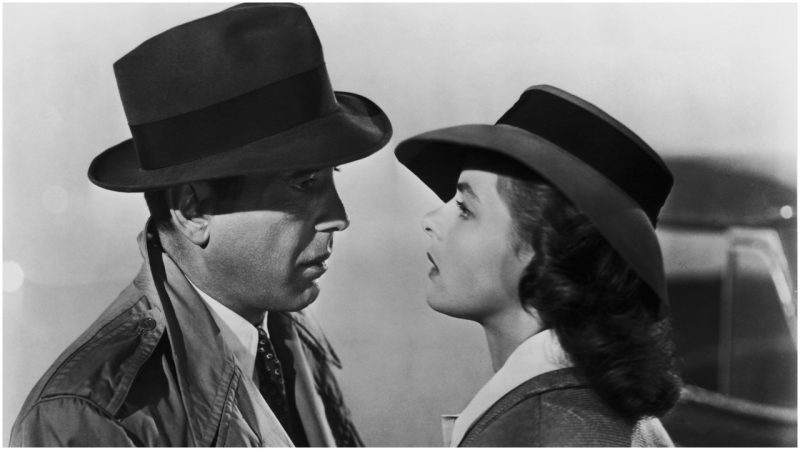Today it has a place in many filmgoers’ hearts as their favorite classic black-and-white romantic melodrama of World War II. But when it premiered at New York’s Hollywood Theater on Thanksgiving Day in 1942, Casablanca was only a modest critical and commercial success. No one would have expected it to nab the number 2 slot on American Film Institute’s 100 Greatest Movies of All Time. Shot largely indoors with a cast of war refugees, a moody star shorter than his leading lady, and an unwritten ending, Casablanca didn’t enter the cult-movie pantheon until 13 years later.
In 1957, the year Humphrey Bogart died of throat cancer, an art-house theater owner in Cambridge, Massachusetts, screened the movie (and other Bogart classics) for Harvard undergraduates during finals. It proved so popular, the screening became an annual rite that spread to other college campuses, introducing a new generation to Rick’s café, the piano player Sam, the doomed romantic triangle, and so many now-famous lines. “Here’s looking at you, kid.”
It all began in January of 1942, when Warner Brothers Studio originally (and erroneously) announced that Ronald Reagan would star as the romantic lead, Rick, in a new movie adapted from an unproduced play, Everybody Comes to Rick’s. Humphrey Bogart was not an obvious choice: Dark and brooding, the craggy-faced New Yorker had recently and more readily inhabited roles as gangsters. Bogart was a cranky presence on set, unhappily married at the time to his third wife, with whom he had a stormy, contentious relationship. (They would divorce a few years later; within two weeks he was married to Lauren Bacall.)

The studio decided that the character of Rick’s love interest, called Lois Meredith in the play, would evoke more romantic longing if she were European. So her name was changed to Ilsa Lund, and the luminescent Swedish star Ingrid Bergman cast in the role.

Only one problem: the willowy Bergman was two inches taller than Bogart. To make up the difference, Bogart had to wear platform shoes, stand on boxes, and sit on cushions — none of which made him happy. (Look closely at Rick and Ilsa sitting side-by-side in a banquette, and you see Bergman twisting her hips so she’ll appear shorter.) Their on-screen chemistry was pure theater. Bergman later famously wrote: “I kissed him, but I never knew him.”
Many of the cast and crew were Europeans, starting with the Hungarian director, Michael Curtiz. Many had fled the Nazis. Conrad Veidt, a Weimar movie star married to a woman who was Jewish, had immigrated first to the U.K. and then to the U.S. Veidt brought a startling verisimilitude to his role as Major Strasser. Paul Henreid, who plays Ilsa’s husband, the resistance fighter Victor Laszlo, was born in Trieste, then a part of the Austro-Hungarian Empire. His father’s family was Jewish and had changed their last name from Hirsch.

Peter Lorre, who played the thief Ugarte, was born Laszlo Lowenstein in the Austro-Hungarian Empire. He began his acting career in Austria and Germany but fled in 1933, because he was Jewish. War refugees filled the set as extras. “All of these refugees from Nazi Europe found a lot of roles for the next four years playing Nazis in the movies,” Aljean Harmetz, author of the 1992 book Round Up the Usual Suspects: The Making of Casablanca, told NPR’s Susan Stamberg earlier this year.

Casablanca was shot on a soundstage in Burbank, California, during the summer of 1942. World War II conditions and recent sightings of Japanese submarines meant the film was almost entirely shot inside; no matter since it was mostly set in Rick’s Café anyway. The script was continually rewritten, and even during filming, no one was quite sure exactly how it would end. This resulted in the unusual practice of filming in sequence. Because a huge set could not be constructed outside, the famous last scene was shot with a small plywood plane serviced by a cast of people and enveloped in atmospheric fog.

The movie was originally scheduled to debut in June of 1943, but the release date was moved to capitalize on the fact that the Allies had landed in the actual Casablanca, in North Africa, in November 1942. Casablanca premiered a couple weeks later in New York City on Thanksgiving Day.
The film was nominated for eight Academy Awards (including Humphrey Bogart’s first for Best Actor), and won three, for Best Picture, Best Director, and Best Screenplay. To misquote Rick as he bids his poignant farewell to Ilsa, “We’ll always have Casablanca.”
